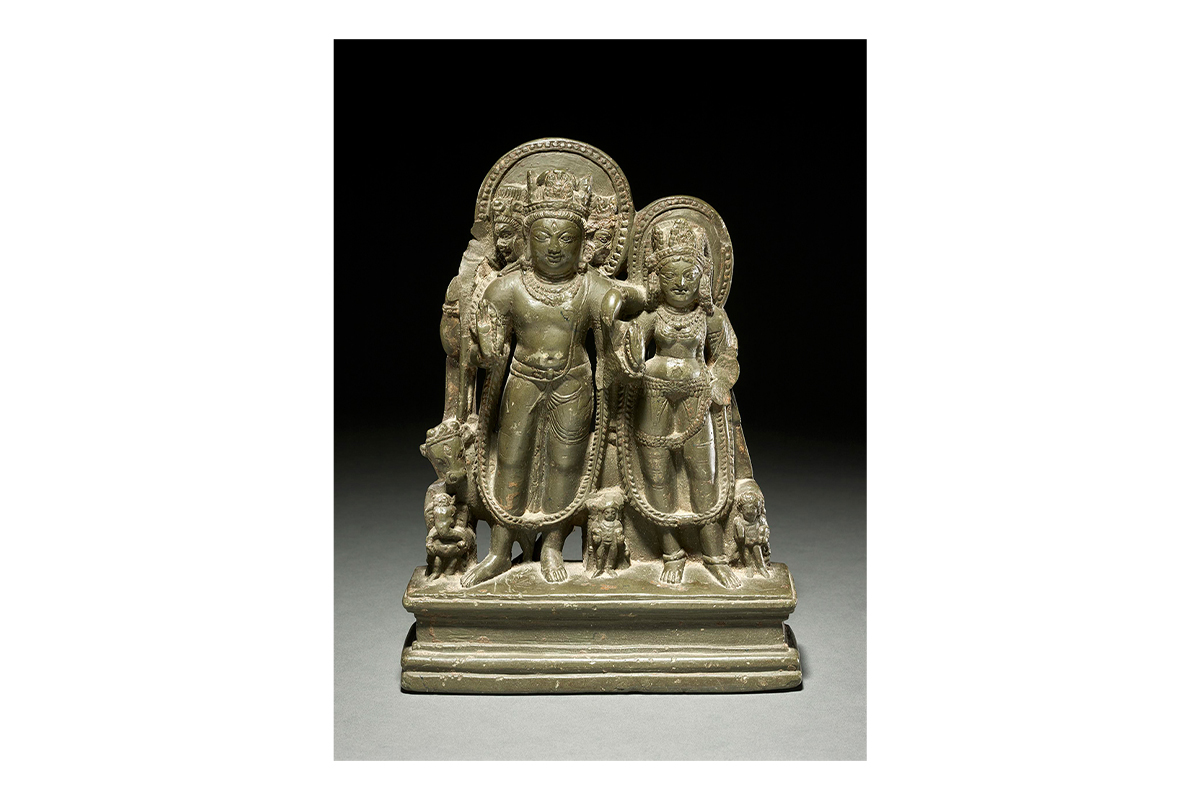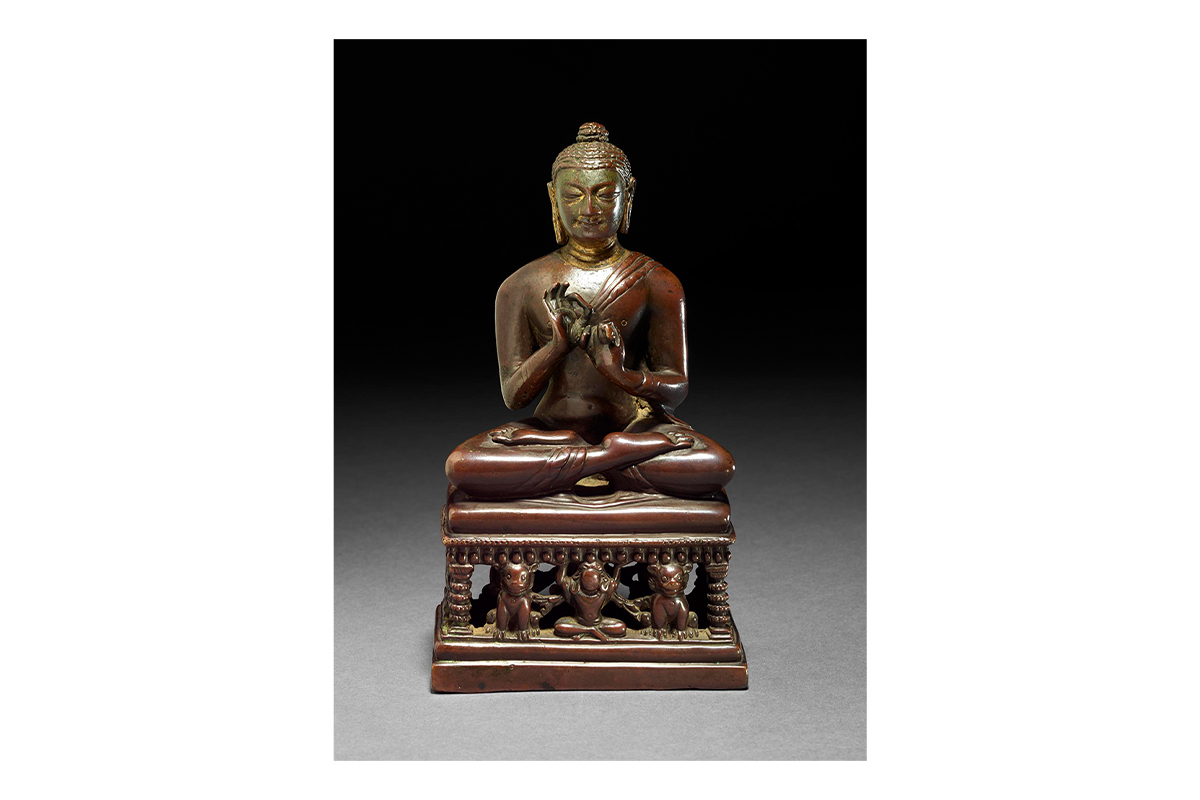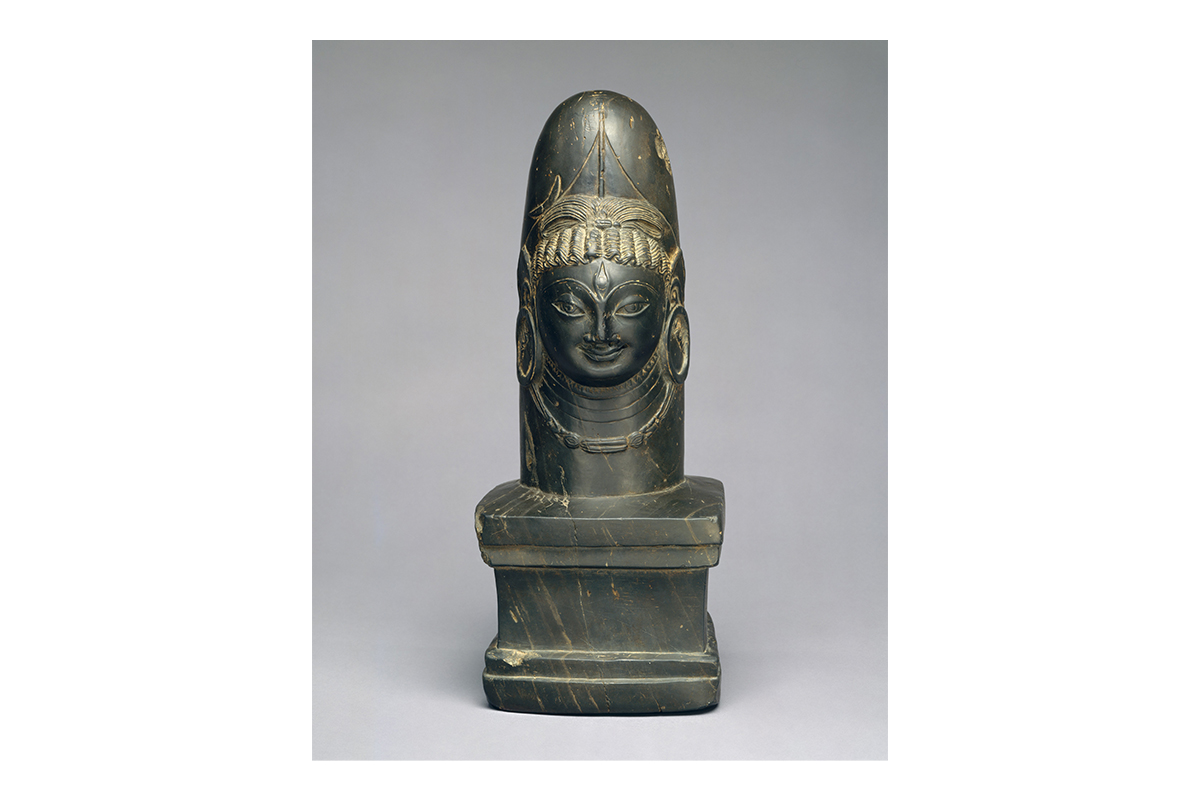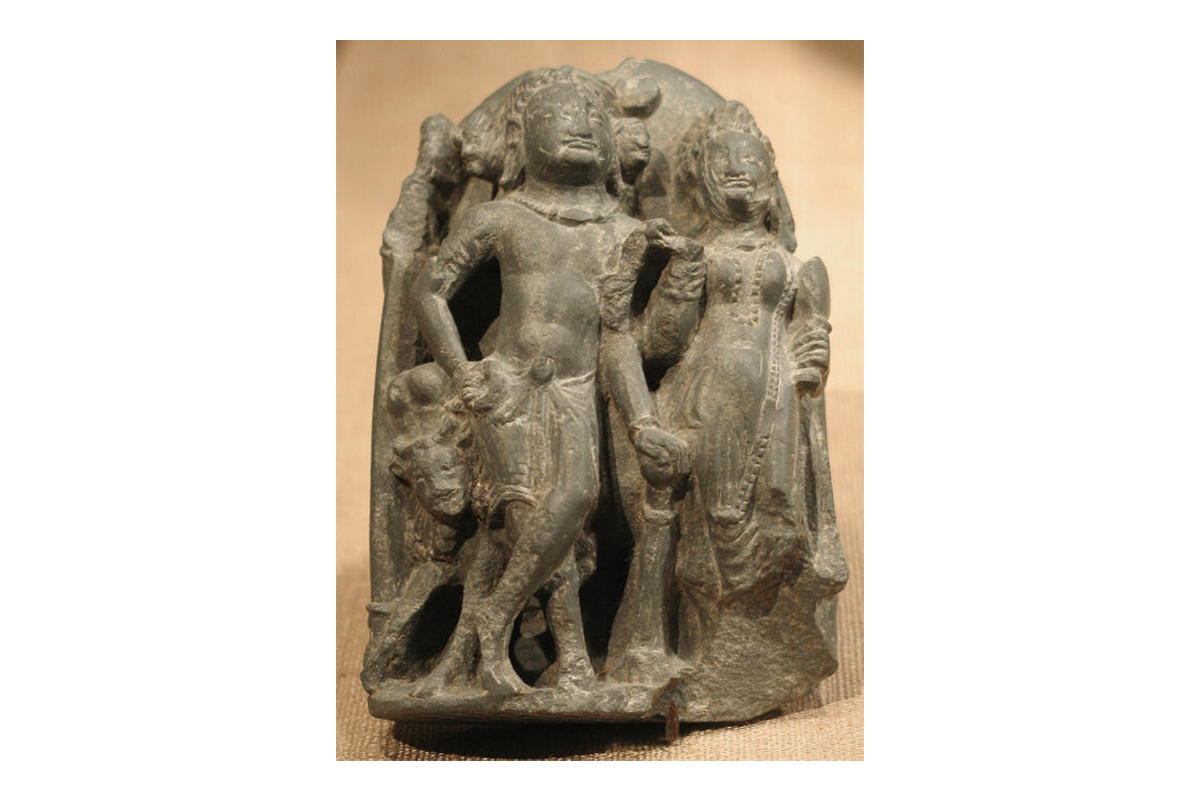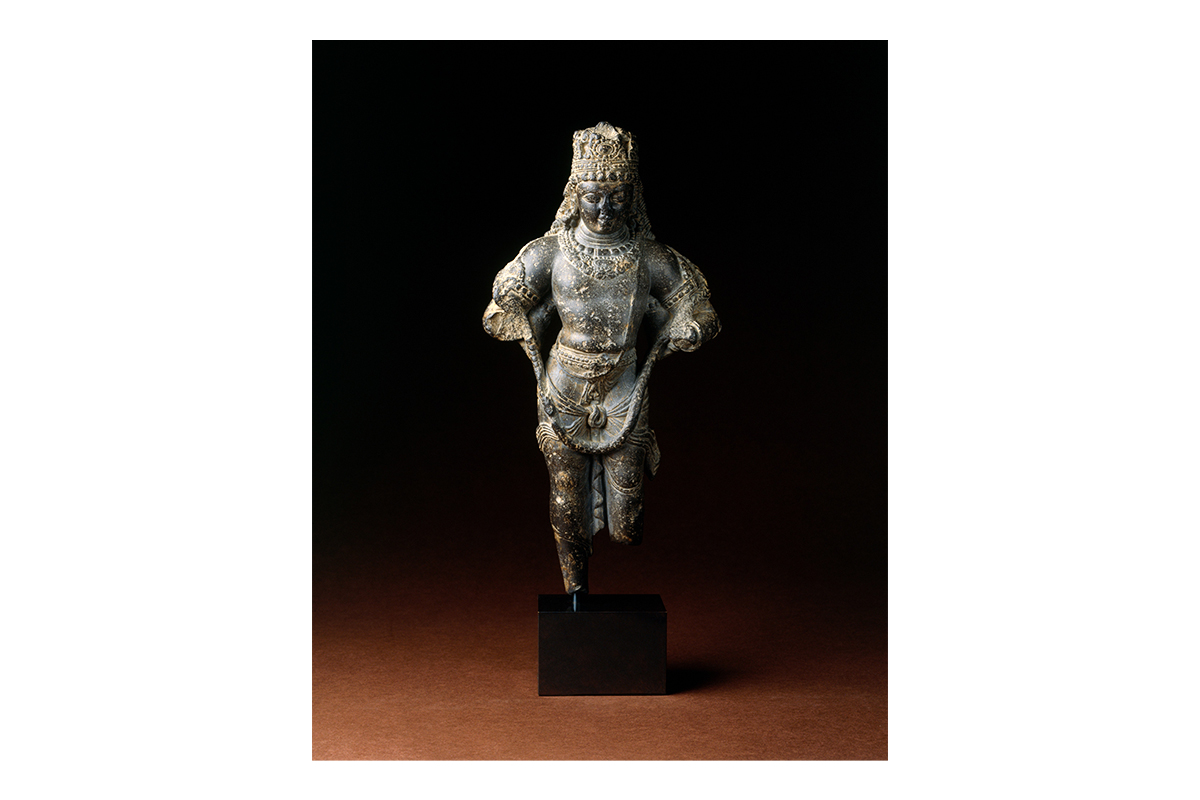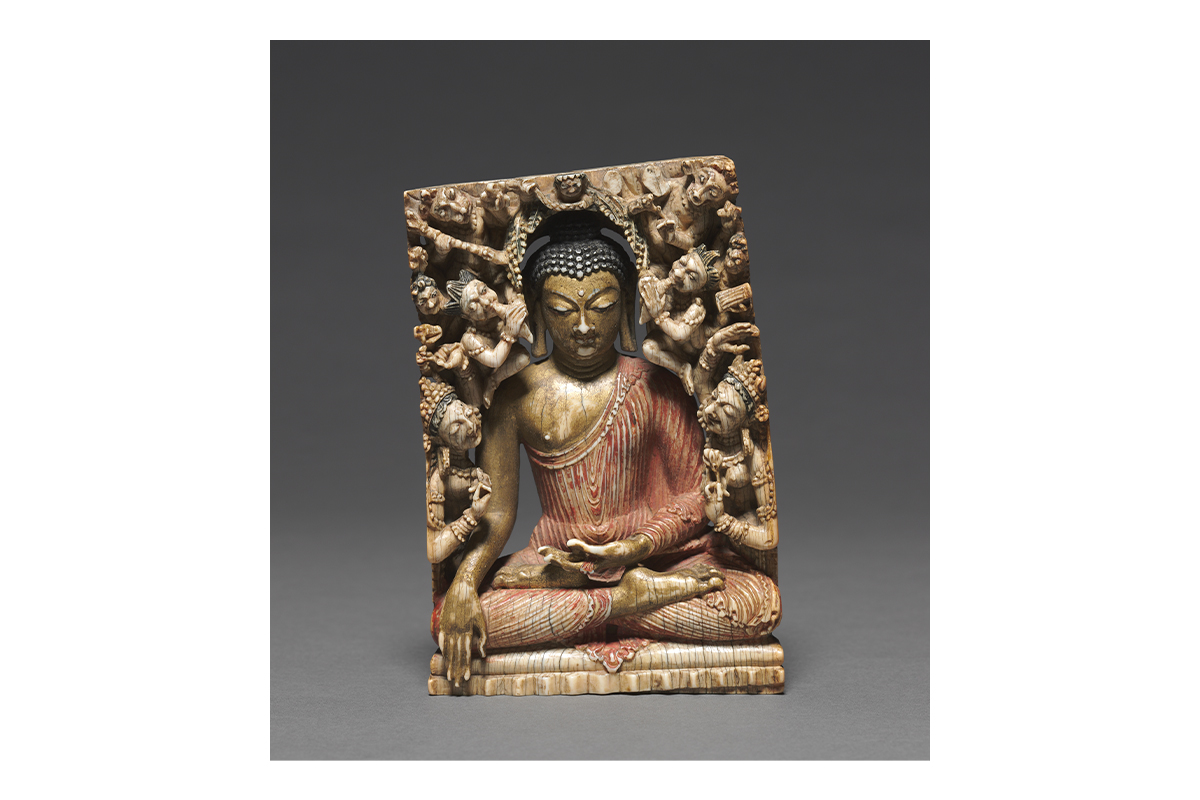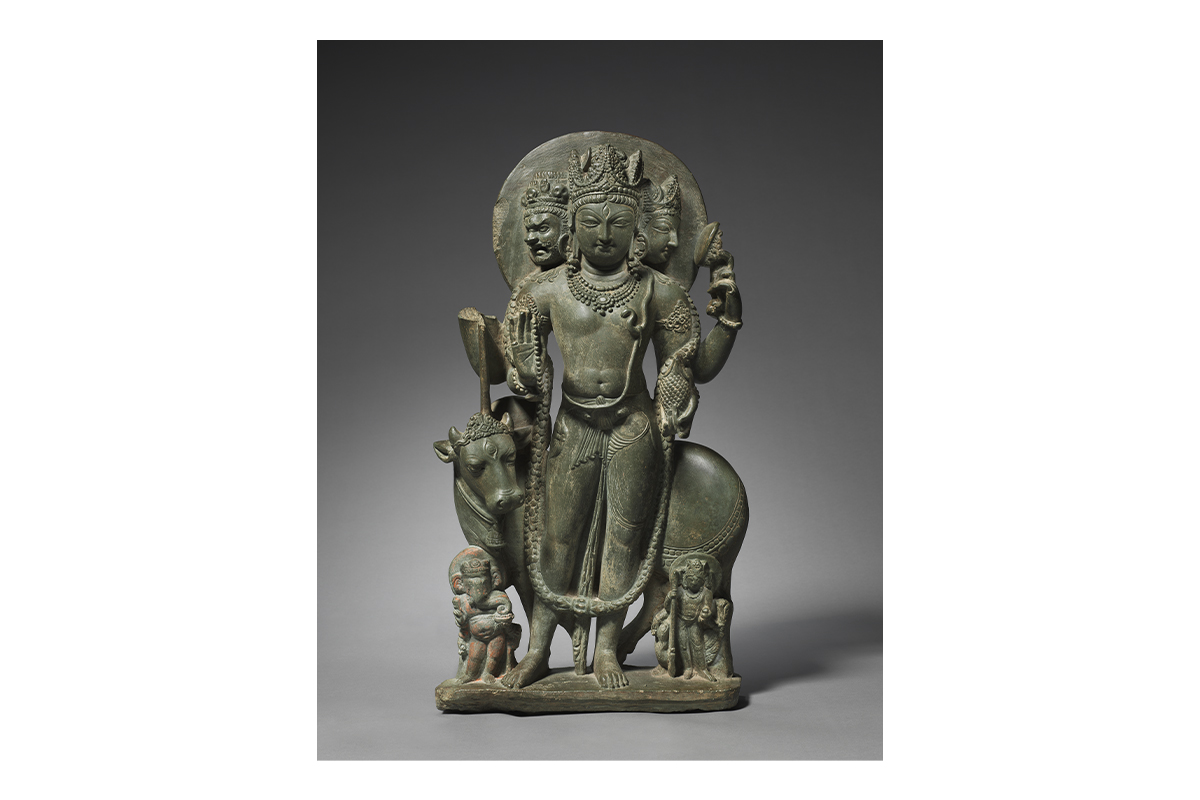Rise of the Kashmir Kingdom
750 CE
The Kashmir Valley becomes a flourishing cultural and geopolitical centre, gradually expanding into northwestern India and parts of present-day Punjab, establishing trade links to the Gangetic Plains. Kashmir’s position also grants it the status of a Himalayan crossroads, with its kings raiding parts of present-day Xinjiang and Tibet. The period sees the emergence of Kashmiri Shaivism, based on principles of Shaiva-Shakta Tantra. It is also an important centre for Mahayana and Tantric Buddhism, and Pancharatra Vaishnavism, with elites building a number of stupas and temples in the Kashmiri architectural style, which draws from the cosmopolitan architecture of ancient Gandhara (in present-day Afghanistan and Pakistan). The courtly costume and cultural norms of Kashmir are adapted by other polities in the neighbourhood, including those of present-day Ladakh. Surviving bronze votive sculptures from the eighth and ninth centuries depict iconography that suggests the dominance of both Buddhism and Shaivism in the Kashmir Valley.
Bibliography
Chanchani, Nachiket. Mountain Temples and Temple Mountains: Architecture, Religion, and Nature in the Central Himalayas. Seattle: University of Washington Press, 2019.
Pal, Pratapaditya. “Bronzes of Kashmir: Their Sources and Influences.” Journal of the Royal Society of Arts 121, no. 5207 (1973): 726–49. http://www.jstor.org/stable/41371150.
Feedback 
This entry appears in
Art in South Asia
Visit Timeline
Associated Timeline Events
First Published: March 11, 2024
Last Updated: August 5, 2024



